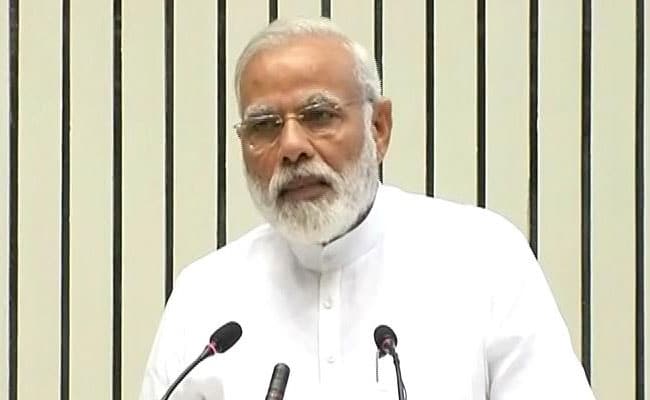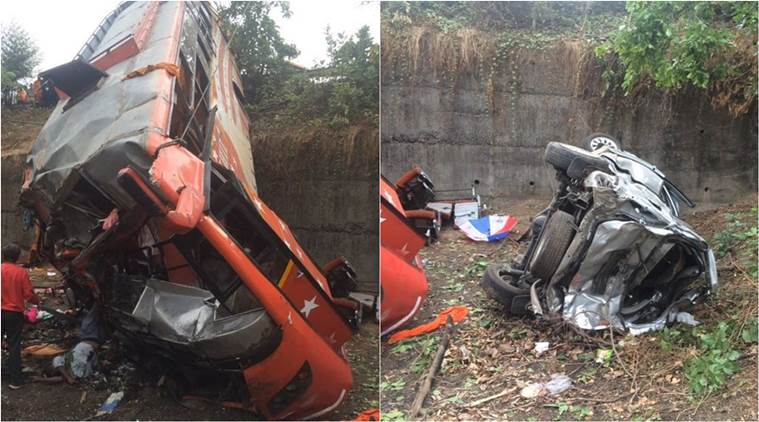Yet another dimension of Indian “soft power” in Afghanistan was reflected well when Prime Minister Narendra Modi along with Afghan President Ashraf Ghani on 3 June jointly inaugurated the Afghan-India Friendship Dam, earlier known as Salma Dam. The dam was built at an approximate cost of Rs 1,700 crore by 1,500 Indian and Afghan engineers, technocrats and other professionals.
This was the second time that Modi visited Afghanistan in the last six months. The Prime Minister was in Afghan capital Kabul last December to inaugurate the country’s new parliament building, which was built at a cost $115 million (Rs. 710 crore) by India.
India’s Afghan policy, which is marked by its soft power projections in that country, has remained unchanged since the Vajpayee-era. The policy got a huge boost during the Manmohan Singh regime. Modi is continuing this legacy. The basic premise behind this policy has been that as the Western countries led by the United States fight with the help of Pakistan (a big question mark, in reality) the fundamentalist Taliban and al-Qaida so that Afghanistan is strengthened and consolidated as a stable, modern and vibrant democracy, India will concentrate on the country’s social and economic development. This policy has covered four broad areas: infrastructure projects, humanitarian assistance, small and community based development projects, and education and capacity building programmes.

Prime Minister Narendra Modi. AP
Within this framework India has already invested $11 billion in Afghanistan. It has further pledged another $2 billion for new projects such as Iron ore mines, a 6 MTPA steel plant (by SAIL—Steel Authority of India Limited), an 800 MW power plant, Hydro-electric power projects, transmission lines, roads etc. Then there is the India-Iran transit agreement on transporting goods to landlocked Afghanistan (Modi has just been to Iran to conclude the expansion of the Chabahar port through Indian investment of more than $100 million, which will serve as a hub for the transportation of transit goods to Afghanistan and Central Asia) at a cost of Rs.710 crores ($115 million). Besides, Afghan people have received aid from Indian people and private organisations such as TATA local busses for major cities and many other humanitarian aids.
Overall, Afghanistan is now the second largest recipient of Indian aid just behind Bhutan. This just goes to show how important Afghanistan is for India. India gives more money to Afghanistan than even Bangladesh or Sri Lanka, both of whom have traditionally been dependent on India for their development. In fact, India is Afghanistan’s fifth largest bilateral donor after the United States, the United Kingdom, Japan and Germany.
Incidentally, India happens to be Afghanistan’s first strategic partner in the sense that the two countries signed in 2011 the Strategic Partnership Agreement (SPA) to guide the contours of their overall relations. The SPA, inter alia, “provides for assistance to help rebuild Afghanistan’s infrastructure and institutions, education and technical assistance to rebuild indigenous Afghan capacity in different areas, encouraging investment in Afghanistan’s natural resources, providing duty free access to the Indian market for Afghanistan’s exports support for an Afghan-led, Afghan-owned, broad-based and inclusive process of peace and reconciliation, and advocating the need for a sustained and long-term commitment to Afghanistan by the international community.”
The only military dimension of the SPA has been New Delhi’s pledge to increase training for Afghan soldiers and police within India. The agreement does not include the deployment of Indian combat troops in Afghanistan.
That India’s soft power approach towards Afghanistan is a success story is evident from the fact that in a Gallup poll done in 2010, majority of Afghans preferred Indians over both Americans and Pakistanis. 71 percent of Afghans said that India was playing most positive role in country. A BBC guided opinion poll in Afghanistan has also established that India is the most popular country among Afghans.
So far so good. Now, the bigger question is whether soft power alone will serve the larger foreign policy goal of India in Afghanistan. All told, Indian soft power in Afghanistan is based on New Delhi being a “service provider rather than a stake holder”. And this soft power cannot be stretched too far when almost all the mega projects in Afghanistan being built with Indian help have neared completion.
In the ultimate analysis, India has three primary interests in Afghanistan. One is “establishing a secure, strong and democratic state in Afghanistan to prevent an extremist takeover, which could, in turn, lead to terrorism in the region”. Second is not seeing the hapless Afghanistan coerced to provide what is called “strategic depth” to Pakistan in the latter’s war against India. Third is ensuring Afghanistan providing the “connectivity” between India and the Central Asian Republics through Iran’s Chabahar port. Other interests include competing with China in exploring Afghanistan’s immense natural resources (minerals in general; oil and gas assets in particular).
However, India’s growing activities in Afghanistan have not gone well with Pakistan. After India opened consulates in heart, Mazar-e-Sharif, Jalalabad, and Kandahar, Pakistan has charged that these consulates provided cover for Indian intelligence agencies to run covert operations against Pakistan as well as foment separatism in Pakistan’s Baluchistan province. Pakistan believes that India is trying to encircle it through Afghanistan. Therefore it is no secret that Pakistan through its intelligence agencies has always attacked Indian personnel engaged in developmental activities in Afghanistan. Indian embassy in Kabul as well as Indian consulates in other parts of Afghanistan have also been attacked by Pakistani agencies.
What is the way out? American scholar Stephen Cohen, an authority on South Asia, argues that Afghanistan will be really safe and stable if India and Pakistan on the one hand, and the United States and Iran on the other, pursue a shared approach towards Kabul. But then, is such an approach realistic? “It is problematic but highly desirable,” says Cohen. According to him, one of the reasons why India and Pakistan are after each other in the subcontinent is that they share the same strategic legacy of the British Raj, and so both compete in the same space, including Afghanistan. The British had the same problem and the Mughals also fought for the same strategic space.
“India and Pakistan share the British legacy in Afghanistan. Both India and Pakistan see Afghanistan as their strategic space. That means they compete with each other. Nobody has proposed – and I think America should have done – that the two countries sign an agreement to cooperate. An attempt should be made to bring them together in Kabul”, Cohen says. “Both can join to train Afghan soldiers and police. India has been doing a great job in helping in civil economic reconstruction and training of security forces of Afghanistan. But by training security forces, India is competing with Pakistan which is supporting the Taliban.”
Cohen is emphatic that If India and Pakistan find a way to cooperate in Afghanistan it would be a win situation for all stakeholders, including the United States and Iran. He is clear that the Americans have no stomach to prolong their military presence in Afghanistan, or for that matter in any part of West Asia, given the rising unpopularity of American military involvement in the region within the United States.
However, there is only problem with Cohen’s thesis. India wants a stable and prosperous Afghanistan. But Pakistan cannot be said to be sharing the same approach. Because, once Afghanistan becomes strong, secure and stable, it will demand the return of its territories (inhabited by Pasthuns), now parts of Pakistan because of the Durand Line, drawn arbitrarily by Sir Henry Mortimer Durand, who was foreign secretary in the colonial government of British India. He had signed a document with the king of Afghanistan Abdur Rahman Khan on 12 November 1893, relating to the borders between Afghanistan and the then India. However, no legislative body in Afghanistan has ever ratified the document and the border issue is an ongoing contention between Pakistan and Afghanistan.
Be that as it may, the fact remains that India’s soft power in Afghanistan has reached its limits. Now is the time to develop a ‘smart power’ approach along with other stakeholders in Afghanistan. May be Modi will initiate a discussion on this when he meets the US President Barak Obama in the next few days.


